20D.40.110 Valley View, Bear Creek and Trestle Districts.
20D.40.110-010 Intent.
The intent of these districts is to provide for everyday, basic shopping needs and services, such as groceries, pharmacies, and other convenience retail goods and services. Development and redevelopment in these districts should be compatible with the goal of meeting the shopping and service needs of the community and surroundings, as well as with the long-term vision of encouraging a more pedestrian-supportive, mixed-use environment in these districts. As the three districts are located at the three entry points to the Downtown neighborhood, development and redevelopment of buildings and centers at these gateways should enhance the visual appeal of these entrances to Downtown. (Ord. 2302; Ord. 1993)
20D.40.110-020 Design Criteria.
(1) Building Orientation and Access.
(a) Buildings are not required to be sited on the pedestrian system, but shall provide safe and accessible pedestrian connections to it.
(b) Service areas and rear entrances should not be oriented to public areas.
(c) Orient buildings toward the streets and locate parking on the side or rear whenever possible.
(2) Building and Site Design.
(a) Develop sign programs to coordinate and consolidate signs in order to increase visibility from automobiles and minimize visual clutter.
(b) Minimize sign elements, such as colors that are too brilliant or other features that would distract from the entry feature.
(c) Landscaping on streets should be simplified to allow adequate visibility from automobiles to businesses.
(d) Parking lots should be landscaped to screen parking from street views.
(e) Building and site design of properties located at the entrances to Downtown shall also orient facades, open space, and pedestrian features towards the streets in order to enhance the gateway nature of the sites.
(f) One tree for every four parking stalls and landscape planting areas shall be provided to provide visual relief from large asphalt areas, shade pavement, and reduce impervious surface area.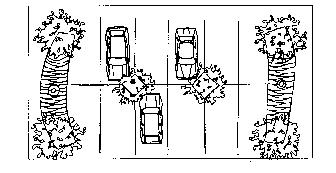
Like this.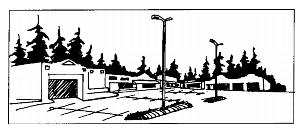
Not this.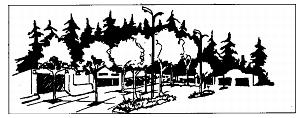
The existing strip mall parking lot retrofit with new landscape installation of one tree for every four parking spaces.
(g) Pedestrian access from parking areas should be safe and clearly defined.
(h) Landscaped medians should be provided where access and traffic movements allow.
(i) Conflict between pedestrians and automobiles should be avoided by minimizing vehicle crossings of pedestrian accessways.
(3) Mixed-Use Villages. Development proposals in these districts may be allowed increased building height, to a maximum of four stories, provided the proposal meets the following criteria:
(a) The site must be a minimum of two acres in area.
(b) The site plan and conceptual building elevations demonstrate there will be creation of a traditional downtown pattern by providing new internal private or public streets with curbside parking, street trees, and buildings fronting on street sidewalks and plazas. Within these developments, new internal streets and pathways shall be provided approximately every 300 feet to establish/enhance a finer urban grid between existing Downtown streets bounding the sites. See conceptual example below.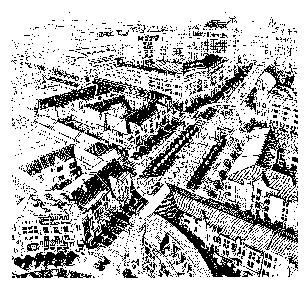
Concept of Mixed-Use Village
(c) On sites that include existing grocery stores, pharmacies, and other convenience retail uses meeting daily needs, spaces for such uses shall be provided in the new development proposal. Retention of grocery stores is of the highest priority.
(d) Buildings taller than three stories fronting on existing public streets shall include building height modulation to reduce building scale at the street edge. Upper floors, higher than three stories, shall be set back 20 feet from the main building face.
(e) This subsection (3) shall not be effective until the adoption and implementation of a Downtown parking management plan.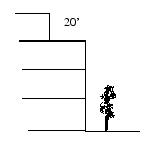
(f) In areas where a street roadway may be more than one story above the ground floor elevation of a building because of topography, such as the southwest corner of NE 90th Street and Woodinville-Redmond Road, building height may be increased to a maximum of five stories on the lower side of the site, provided the height of the building does not exceed four stories along the higher street elevation and provided the net developable floor area of the property covered by the conceptual master plan does not exceed the floor area allowed by the maximum building height of four stories. (Ord. 2302; Ord. 1993)


